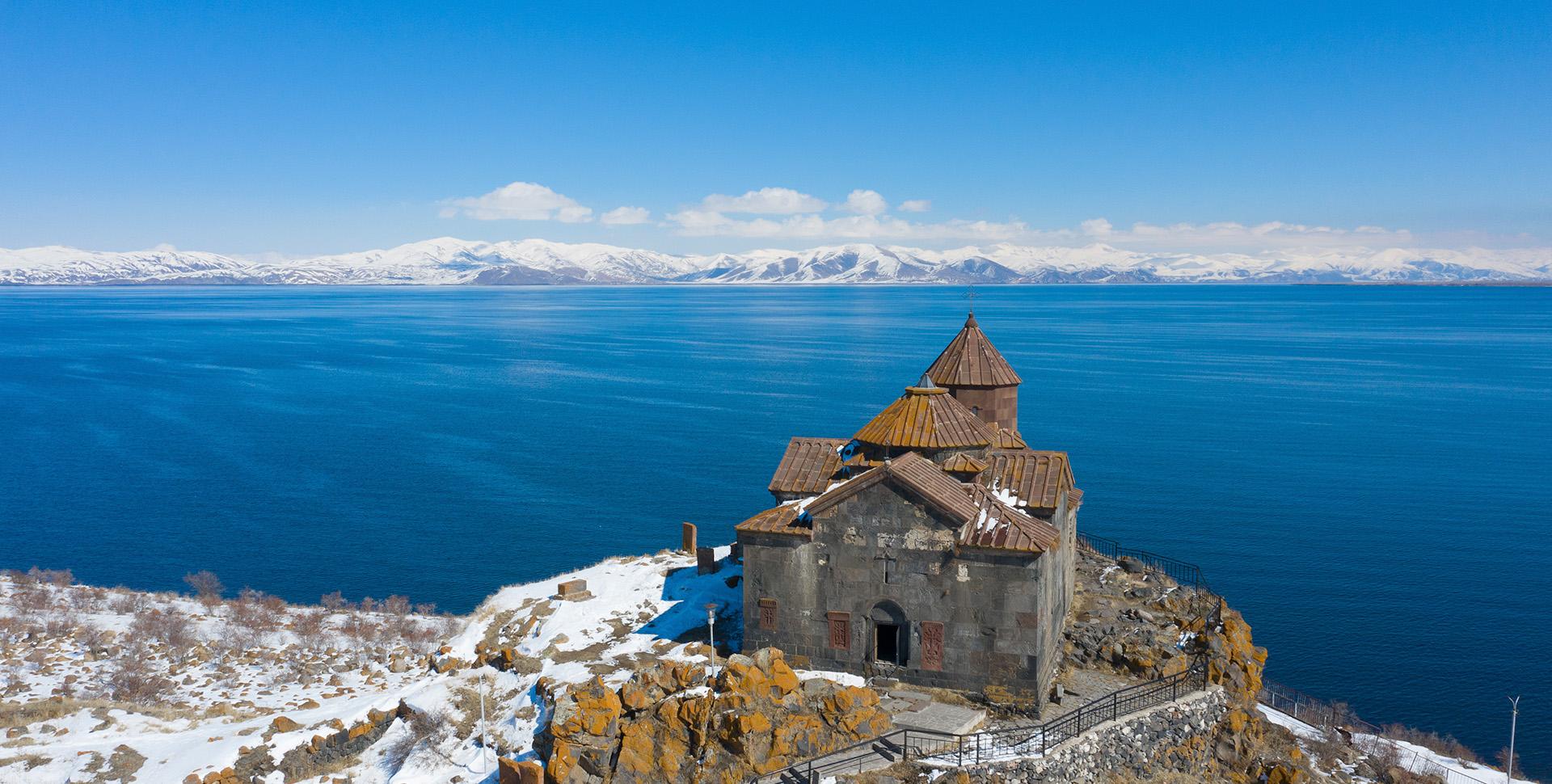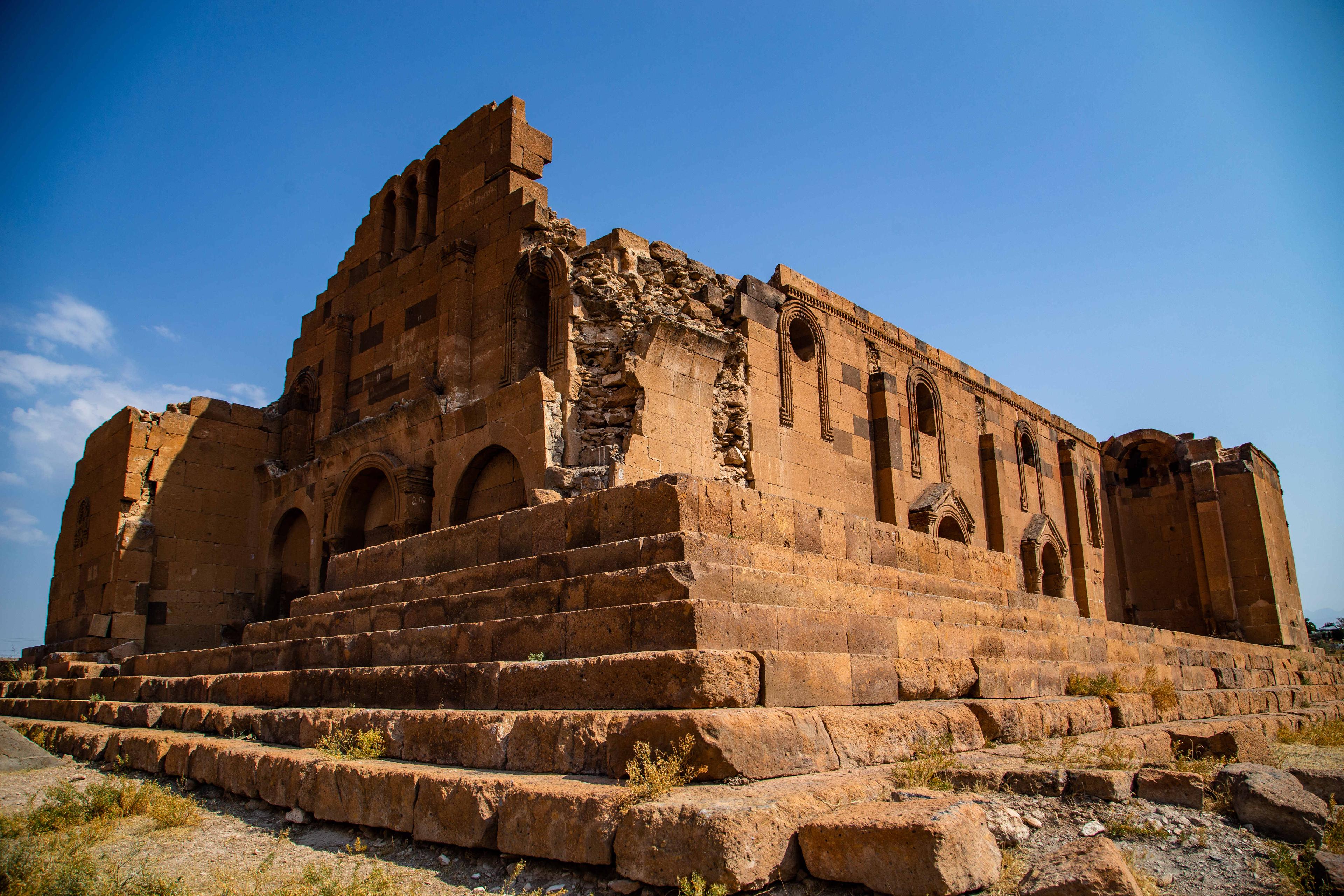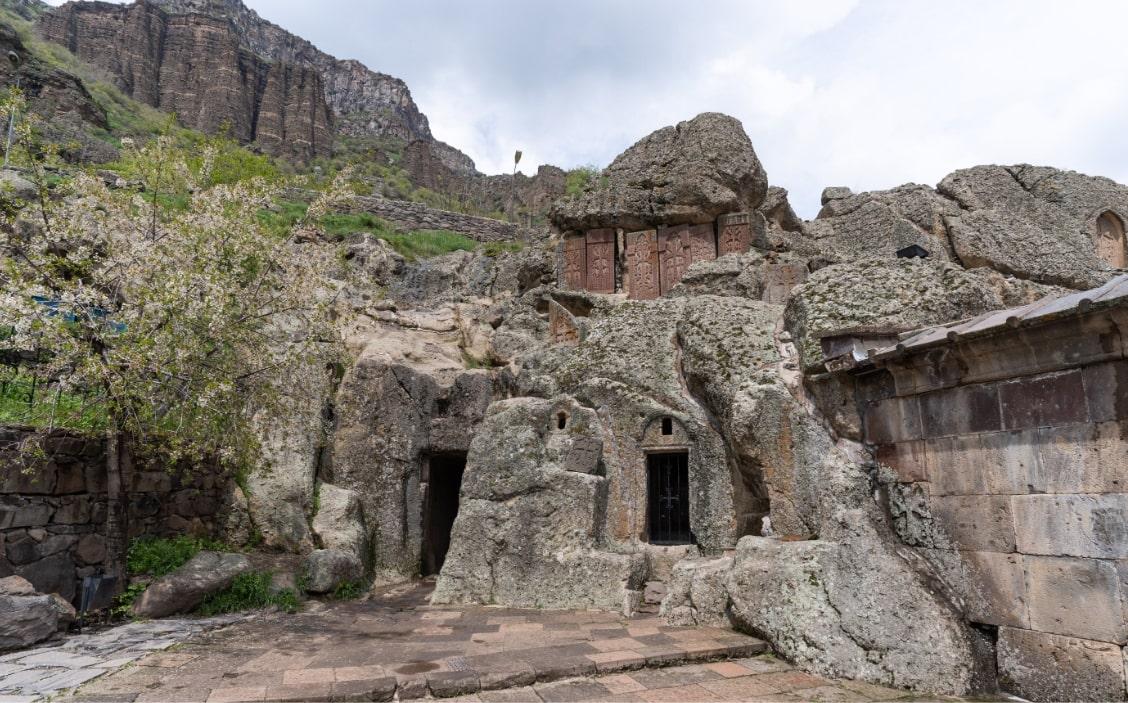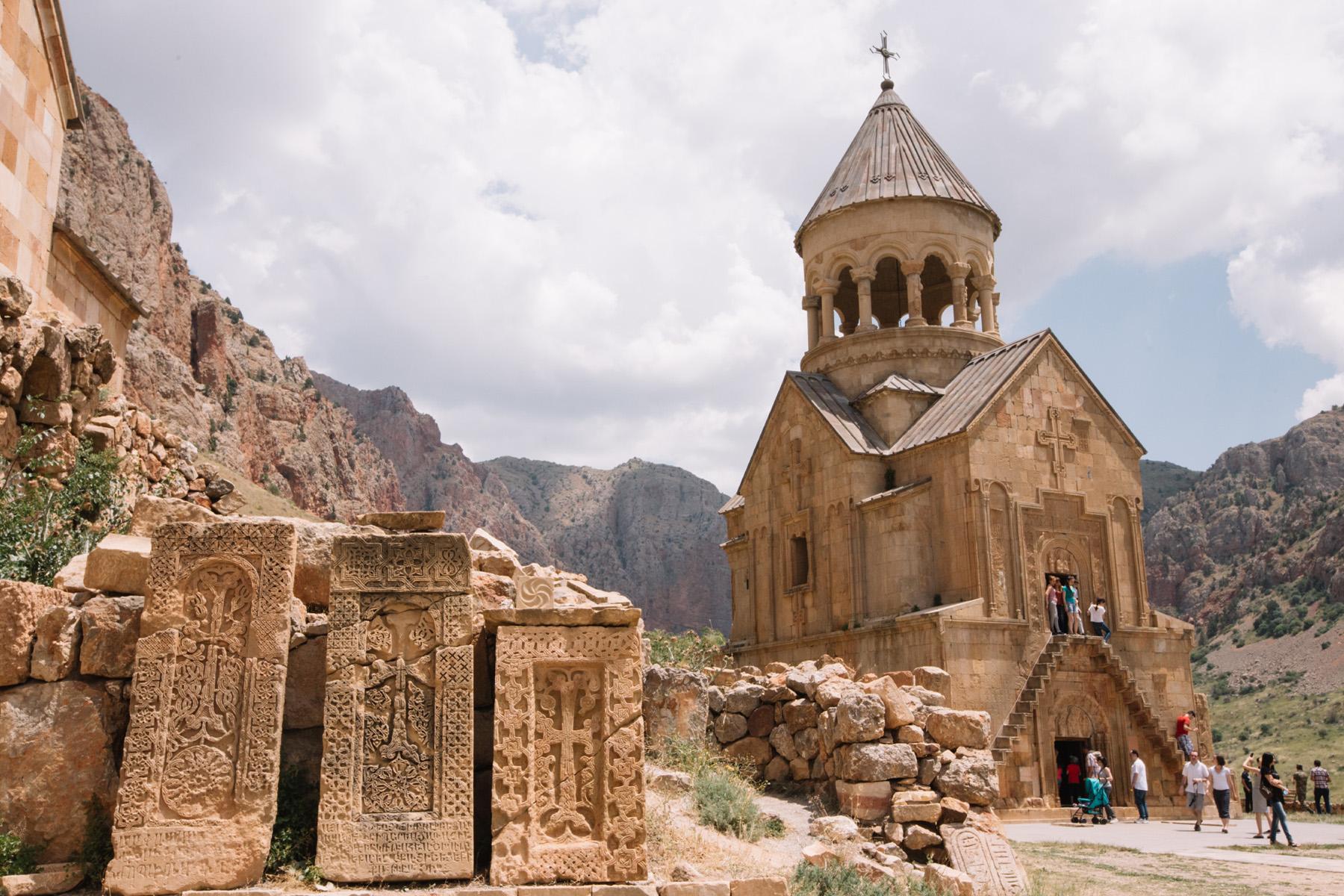The Monasteries of Haghpat and Sanahin
Architectural style:
Armenian
Date of foundation:
10th century
Region
Lori
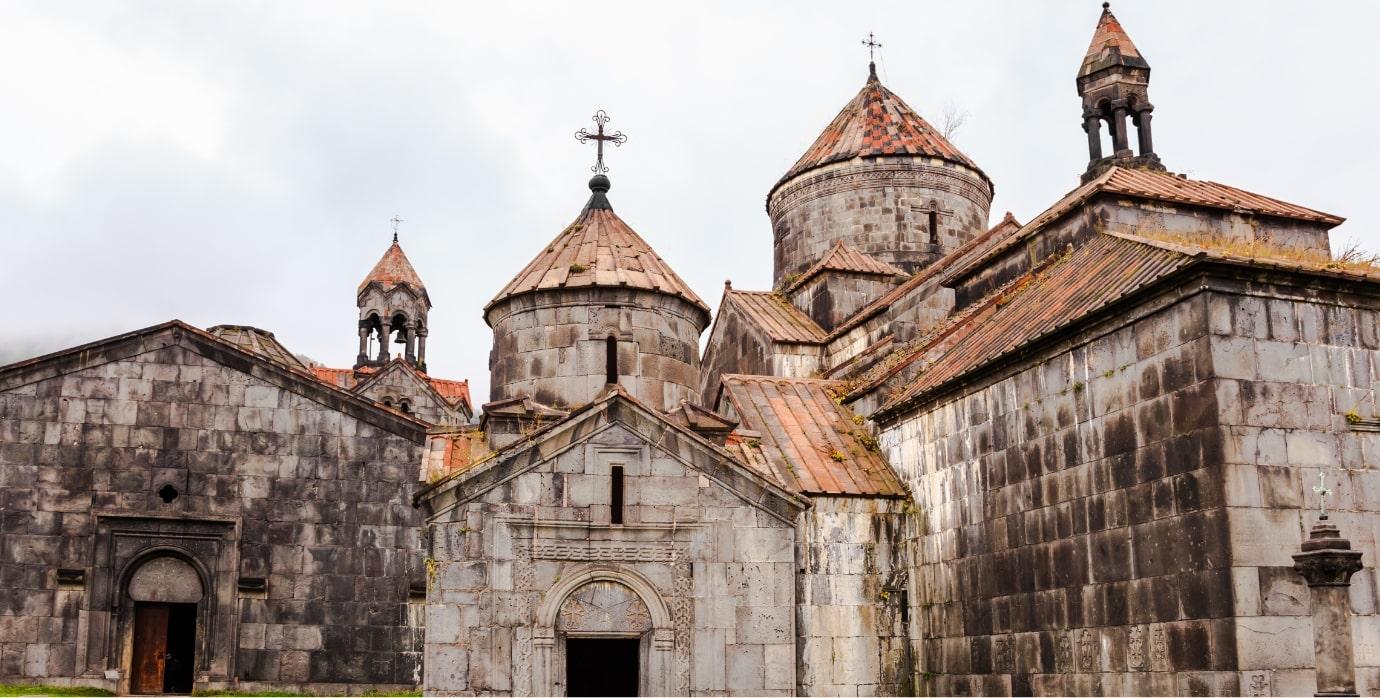
Nestled in the picturesque natural area of Lori, the Haghpat and Sanahin monastic complexes
are a brilliant example of the revival of Armenian architecture in the 10th and 11th centuries.
These complexes acted as spiritual, cultural, and educational centers, focused on philosophy,
medicine, rhetoric, and music.
These two Byzantine style monasteries in the Tumanian region from the period of prosperity
during the Kiurikian dynasty (10th to 13th century) were important centers of learning. Sanahin
was renowned for its school of illuminators and calligraphers. The two monastic complexes
represent the highest flowering of Armenian religious architecture, whose unique style
developed from a blending of elements of Byzantine ecclesiastical architecture and the
traditional vernacular architecture of the Caucasian region.
The Monastery of Haghpat, founded by Queen Khosrovanush (wife of the Armenian King Ashot
III the Merciful) in AD 976, consists of one narthex, two corridor-sepulchers, a refectory, a
scriptorium, the Chapel of Hamazasp, a belfry, several chapel-tombs and cross-stones
(khachkars), all surrounded by a towered rampart. The approaches to it were observed from
the Kayanberd Fortress, which was built in the 13th century especially for that purpose.
Sanahin used to be the administrative center and family burial place of the Kyurikyan Bagratids
(10th and 11th centuries), as well as the Episcopal residence for the diocese (until the 11th
century).
The Sanahin Monastery contains St Astvatsatsin (Holy Mother of God), St Amenaprkich
(Redeemer) and St Grigor Churches, narthexes, fore-church, scriptorium, belfry and academy.
St Astvatsatsin Church (AD 928-944) is a central-domed, cross-shaped example of Armenian
medieval classical architecture that reached to its perfection in the main building of the
complex – St Amenaprkich Church. It was built between AD 957 and 966 under the patronage
of Queen Khosrovanush (wife of King Ashot III the Merciful). The focus of the interior is on the
central nucleus and the harmony between its square base and round dome. The main apse is
surrounded by four two-story sacristies. The church is approached through a narthex, built in
AD 1181 in a cross-in-square plan with the roof supported by four columns (the earliest known
example of this plan). The ornamentation of the capitals of the columns with symbolic
sculptures in the shape of animal heads adds distinctive expression to this narthex.
More than 50 khachkars (cross-stones) are preserved in Sanahin, amongst which the most
valuable are the khachkars of Grigor Tuteordi (on the northern wall of St Harutyun Church, by
Mkhitar Kazmich) and Sargis (on the western wall of St Astvatsatsin Church). These khachkars
are considered among the best examples of medieval Armenian sculpture.
